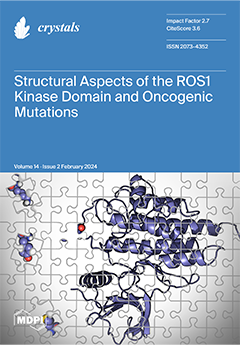Owing to their exceptional properties, which are usually determined by the growth conditions, 2D transition metal dichalcogenides (TMDCs) offer numerous research directions for applications in the fields of spintronics, valleytronics, and optoelectronics. Here, we focus on the chemical vapor deposition (CVD) synthesis of
[...] Read more.
Owing to their exceptional properties, which are usually determined by the growth conditions, 2D transition metal dichalcogenides (TMDCs) offer numerous research directions for applications in the fields of spintronics, valleytronics, and optoelectronics. Here, we focus on the chemical vapor deposition (CVD) synthesis of WSe
2 (tungsten diselenide) nanoclusters/nanoflakes by using a liquid precursor for tungsten (ammonium metatungstate) on Si/SiO
2, fused silica, and sapphire substrates. Various WSe
2 clusters with different sizes, thicknesses, and geometries were analyzed by means of optical and atomic force microscopy (AFM) and Raman spectroscopy. The observed structures were mostly WSe
2 multilayers; however, monolayer formations were also found. They showed significant morphological differences, as well as wide nucleation density and size variations, possibly related to precursor/substrate surface interactions under the same CVD synthesis conditions. The largest WSe
2 domains with a lateral size of up to hundreds of micrometers were observed on sapphire, probably caused by a higher growth rate of singular nucleation sites. WSe
2 domains with irregular and triangular shapes were simultaneously identified on fused silica, whereas multilayered pyramidal WSe
2 structures dominated in the case of Si/SiO
2 substrates. The application of polarized Raman spectroscopy to precisely determine and differentiate the characteristic vibrational modes (
,
, and
) enabled the unambiguous identification of 2D and/or multilayered WSe
2 formations with a high crystallinity level. The presented comparative analysis of samples prepared in relatively simple synthesis conditions (moderate working temperatures and ambient pressure) provides a base for further progress of the facile metatungstate CVD method and relevant opportunities for the exploration of 2D TMDC materials.
Full article





